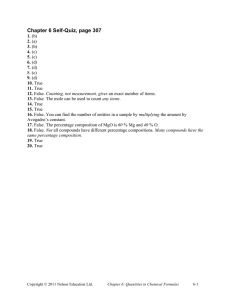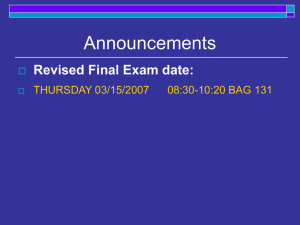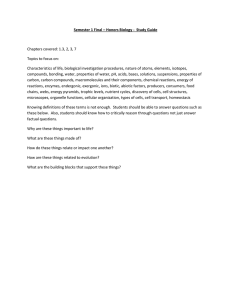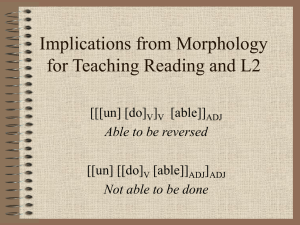chapter 3.docx
advertisement
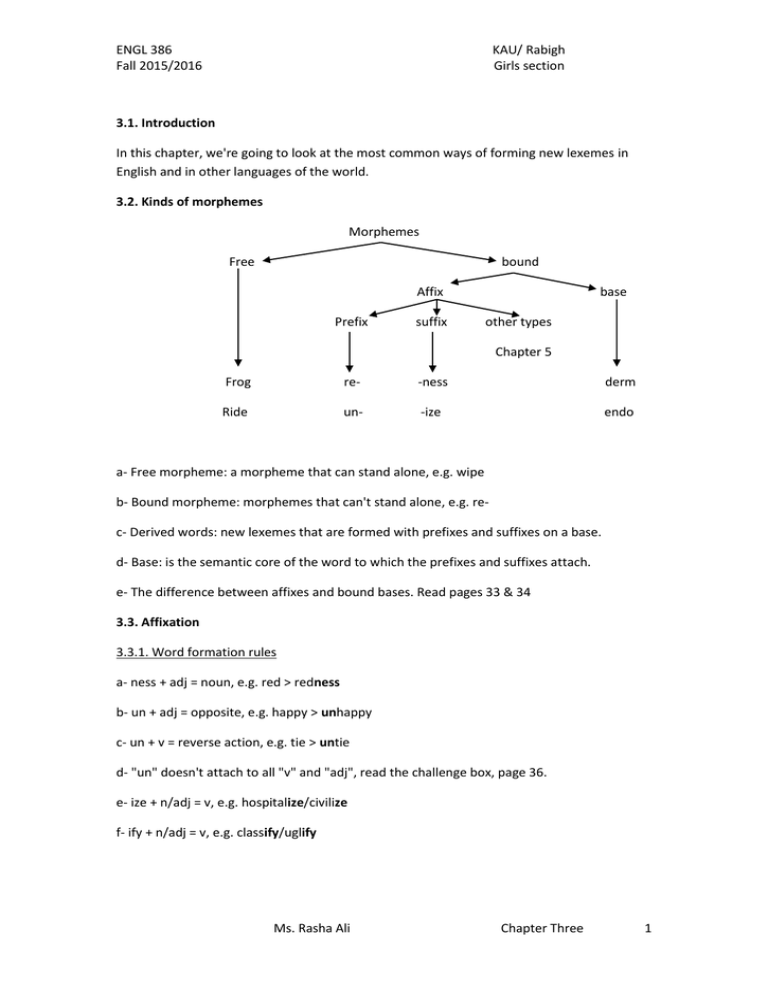
ENGL 386 Fall 2015/2016 KAU/ Rabigh Girls section 3.1. Introduction In this chapter, we're going to look at the most common ways of forming new lexemes in English and in other languages of the world. 3.2. Kinds of morphemes Morphemes Free bound Affix Prefix suffix base other types Chapter 5 Frog re- -ness derm Ride un- -ize endo a- Free morpheme: a morpheme that can stand alone, e.g. wipe b- Bound morpheme: morphemes that can't stand alone, e.g. rec- Derived words: new lexemes that are formed with prefixes and suffixes on a base. d- Base: is the semantic core of the word to which the prefixes and suffixes attach. e- The difference between affixes and bound bases. Read pages 33 & 34 3.3. Affixation 3.3.1. Word formation rules a- ness + adj = noun, e.g. red > redness b- un + adj = opposite, e.g. happy > unhappy c- un + v = reverse action, e.g. tie > untie d- "un" doesn't attach to all "v" and "adj", read the challenge box, page 36. e- ize + n/adj = v, e.g. hospitalize/civilize f- ify + n/adj = v, e.g. classify/uglify Ms. Rasha Ali Chapter Three 1 ENGL 386 Fall 2015/2016 KAU/ Rabigh Girls section 3.3.2. Word structure Words are more like onions than like necklaces because onions are made up of layers from innermost to outermost. un happy ness N A A Un happy ness Exs. Draw the tree for "conventionalization" in your note pad. 3.3.3. What do affixes mean? Read pages 39, 40 & 41 a- Personal affixes b- Negative and privative affixes c- Prepositional and relational affixes d- Quantitative affixes e- Evaluative affixes 3.3.4. To divide or not to divide? a- Some morphemes are borrowed from different languages like: Latin and French, e.g. port=portare > to carry. b- Cran morphs e.g. cranberry, raspberry. We can divide words into morphemes here more than we were, even though we know that one part of the word isn't meaningful in the way morphemes usually are. 3.4. Compounding Compounds are words that are composed of two (or more) bases, roots, or stems. Ms. Rasha Ali Chapter Three 2 ENGL 386 Fall 2015/2016 KAU/ Rabigh Girls section English compounds: a- Compounds of two nouns: book store b- Compounds of two adj: icy cold c- An adjective and a noun: greenhouse 3.4.1. When do we have a compound? Read in page 43 3.4.2. Compound structure Compounds need to be limited to two bases, e.g. windmill, but sometimes they can be complex, e.g. paper towel dispenser factory building committee report. Some compounds can be ambiguous, e.g. arctic cat observer (read more in page 44 & 45) 3.4.3. Types of compounds English compounds are therefore said to be right-headed. What does this mean? It means the second part in the compounds determine both the part of speech and the semantic kind. For example, greenhouse is a noun because house (the 2nd part) is a noun. Dividing up compounds into: Synthetic Two lexemes The head is a verb The non-head is an argument for the head (verb) Examples: dog walker, home made Root Two lexemes The head can be a noun, adjective or verb The non-head is not derived from a verb. Examples: windmill, ice cold Compounds classification: a- Attributive compound: non-head is a modifier of the head, e.g. snail mail. b- Coordinative compound: both words are head, e.g. producer-director. c- Subordinative compound: one element is interpreted as the argument of the other, usually as its object. Usually this happens when one element is a verb or derived from a verb, e.g. truck driver. We can divide the compounds classification into: a- Endocentric: referent of the compound is always the same as the referent of its head. b- Exocentric: referent of the compound is not the referent of the head. For examples read more in page 48. Ms. Rasha Ali Chapter Three 3 ENGL 386 Fall 2015/2016 KAU/ Rabigh Girls section 3.5. Conversion To form new lexemes by shifting the category or part of speech of an already existing lexeme without adding an affix. For example, table > to table (n to v), to throw > a throw (v to n). you'll find more examples in pages 49 & 50. 3.5.1. What s conversion? Read page 50 3.6. Minor process To form new words there are many ways. Some we mentioned before (affix, compounding and conversion) these are the most common ways. There are a number of less common: 3.6.1. Coinage The invention of a new word or phrase. We rarely coin completely new words, choosing instead to recycle bases and affixes into new combinations. 3.6.2. Backformation The base comes before the word derived by affixation. For example, write > writer 3.6.3. Blending is a process of word formation in which parts of lexemes that are not themselves morphemes are combined to form a new lexeme. For example, "brunch" is a combination of breakfast and lunch. Read in page 52 for more examples. 3.6.4. Acronyms and Initialisms When the first letters of words that make up a name or a phrase are used to create a new word, e.g. FBI = Federal Bureau of Investigation. 3.6.5. Clipping is a means of creating new words by shortening already existing words, e.g. info > information, blog > web log. Read in page 53 for more examples. Ms. Rasha Ali Chapter Three 4

